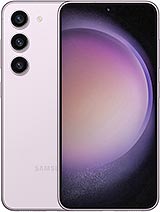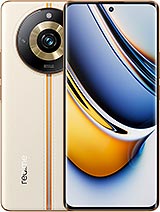Xiaomi 13T review

MIUI 14 on top of Android 13
The Xiaomi 13T and the 13T Pro run on Android 13-based MIUI 14, and while Google just released Android 14, it's unrealistic to expect Xiaomi to launch the duo with the latest software. After all, they both launched a week before the official launch of Android 14. However, the OEM promises four years of major OS updates, so you can rest assured that your 13T will stay relevant for long.

In any case, the Xiaomi 13T runs on a familiar version of MIUI 14, which we've covered in-depth in our MIUI 14 + Android 13 walkthrough, so we suggest reading that for more information about the software. And since this is a higher-tier Xiaomi phone, most of the features outlined in that article can be found on the 13T and 13T Pro.

Performance-wise, MIUI 14 ran smoothly without any hiccups or major performance issues. Quite the opposite, actually. MIUI is one of the smoothest and fastest Android skins around.
Benchmark and sustained performance
The Xiaomi 13T runs on the brand new Dimensity 8200 Ultra based on the 4nm manufacturing process. However, the Ultra part remains a mystery as the specs of the Xiaomi-marketed Dimensity 8200 Ultra are identical to the initially announced Dimensity 8200.

Anyway, the SoC is supposed to be a direct successor to the Dimensity 8100, but the specs sheet suggests it's an entirely new chip. Instead of a 4+4 core configuration, the 8200 adopts a more modern 1+3+4 combo. The main core clocked at 3.1 GHz is still Cortex-A78, though, while the second cluster of 3x Cortex-A78 cores is clocked at 3.0 GHz. The energy-efficient cluster of 4x Cortex-A55 cores is ticking at 2.0 GHz.
The GPU remains unchanged from the previous generation, though, as it's still the Mali-G610 MC6.
The unit we tested features 8GB of RAM and 256GB of internal UFS 3.1 storage as opposed to the UFS 4.0 standard used in the 13T Pro. Interestingly, the device is available only with 256GB storage, while RAM goes up to 12GB. Perhaps Xiaomi saw the small price gap between the 13T and 13T Pro and decided to offer more storage variants to the 13T Pro, which goes up to 1TB.
Speaking of storage, this is one of the notable differences between the two handsets. The more expensive Xiaomi 13T Pro runs on UFS 4.0 storage, compared to 13T's UFS 3.1 storage. Samsung's official data, the theoretical performance gain from UFS 3.1 to UFS 4.0 is 29% faster transfer of large files and 27% faster when unzipping files. We ran AnTuTu 10's storage test and compared the two results.


AnTuTu 10 storage test: 13T Pro vs. 13T
It appears that the Xiaomi 13T Pro achieves a score that's 45% higher than the 13T's in AnTuTu's storage test. That does not mean the 13T Pro is 45% faster than the 13T in real-world scenarios, of course, but it does mean it's considerably faster.
So here's how the Xiaomi 13T fares against the competition and against the 13T Pro with its more powerful Dimensity 9200 SoC.
The benchmark results above show rather insignificant performance gain over the last generation Dimensity 8100 SoC on the Xiaomi 12T. But more importantly, the Dimensity 8200 SoC struggles to keep up with other chipsets in similarly priced phones. After all, many of the 13T's competitors are running either last year's Snapdragon 8+ Gen 1 flagship SoC or this year's top-shelf Snapdragon 8 Gen 2. In short, there are a handful of similarly priced alternatives with more powerful chipsets.
When it comes to sustained performance, the 13T maintains solid clock speeds during prolonged and intensive workloads. In our CPU throttle test that lasted an hour, the 13T maintained 90% of the CPU's theoretical performance without experiencing any sudden drops in performance. The device's body remained adequately warm and was comfortable to hold.


CPU throttle test: 30 min • 60 min
Xiaomi's advertised 5,000mm2 stainless steel VC seems to be doing a pretty good job at keeping the internals cool. On the other hand, the Dimensity 8200 isn't the most demanding chipset out there. Still, it's good to see the 13T being reliable during potential long gaming sessions.
Reader comments
- Drie
- 27 Mar 2025
- IV$
Had my redmi note 10pro and still in good conditions until now but..... I used xiaomi 13t for 1y3m and had been problem with the phone keep starting own its on. March2025 the phone been keep restarting 3times in a month and now can't switch it o...
- JayRoar
- 27 Mar 2025
- tW7
Globally released xiaomi phones doesnt have this problem. Had many global units of xiaomi poco and redmi no problems
- Nati Segel
- 30 Oct 2024
- J20
I bought this phone after mi 11 t that broke. I am viry disappointed by this phone. The most recent os is full of serious bugs. It suddenly stopped correctly functioning. I couldn't fix the problems. I started system restore. After the restore g...







